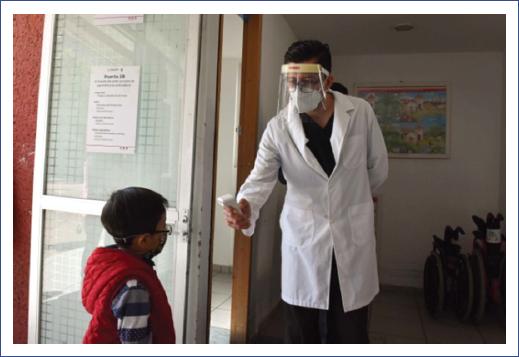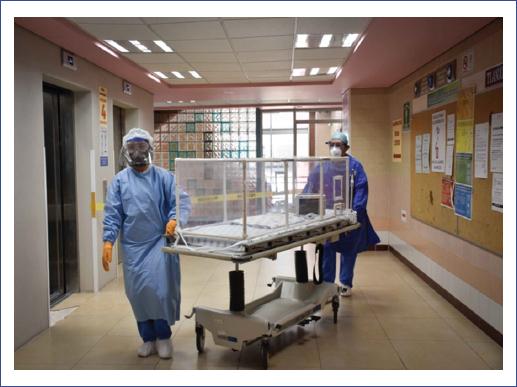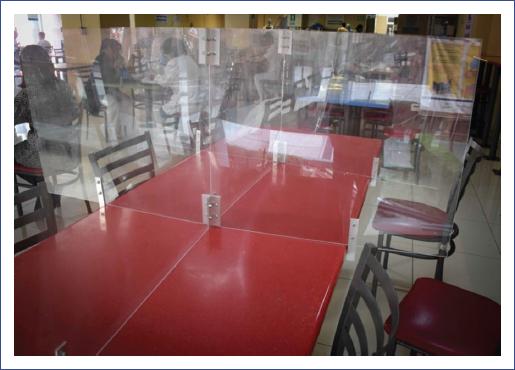Overview of the pandemic
In December 2019, a new virus named SARS-CoV-2 was reported in Wuhan province, China. The first case of COVID-19 in Mexico was confirmed on February 28, 2020, and the World Health Organization declared the pandemic on March 11. As of July 2020, ~20.5 million confirmed cases and more than 700,000 deaths have been reported worldwide1. In Mexico2, reports have documented more than 500,000 confirmed cases, and the number of deaths has surpassed 55,000.
COVID-19 mainly affects the adult population, but between 1 and 5% of the cases correspond to pediatric patients. Fortunately, the disease is less severe in children and adolescents. Only ~0.2% of the cases evolve to severe disease in these age groups3.
The most frequent clinical manifestations of the disease are cough and fever, although this last sign may be absent in more than 50% of the cases4. Gastrointestinal manifestations such as diarrhea, vomiting, or abdominal pain may also be present. In severe cases, the disease may show a multisystemic inflammatory syndrome with severe heart disease5. Few cases of newborns born from mothers who were positive for COVID-19 have been reported. Most of them have shown a favorable evolution, although vertical transmission has not been conclusively demonstrated6.
Actions of the Hospital Infantil de México Federico Gómez in response to the pandemic
Since the beginning of 2020, Mexico has been preparing for the COVID-19 pandemic. One of the measures was the restructuring of hospitals. The Hospital Infantil de México Federico Gómez (HIMFG) was designated as a COVID-19 hospital for the pediatric population’s care, for which actions were taken to identify needs and to organize and implement measures to face the pandemic. The most relevant actions carried out in the different hospital areas were the following:
Restructuring of the hospitalization areas. Initially, 14 beds were assigned in the Emergency Department for patients with suspected COVID-19, and the adjacent Ambulatory Surgery area, with a capacity of 17 beds, was reserved for confirmed patients. For severe cases, ten beds were assigned in the Intensive Care Unit (ICU) and seven places in the Neonatal Intensive Care Unit (NICU). As an additional measure, the auditorium lobby was equipped to attend 12 adult convalescent patients (Figure 1). Because of the pandemic, the hospital capacity for the care of these patients increased. Overall, the hospital has 57 places for COVID-19 patients: 43 places for confirmed patients (10 in the ICU, 5 in the NICU, and 28 in noncritical hospital settings), and 14 places for suspected patients in the Emergency Department.
Human resources. Thanks to the support of the Ministry of Health through INSABI, seven physicians were hired to strengthen the Emergency Department, the Intensive Care, and the Infectious Diseases services. Also, three internal and general medicine specialists and 55 nurses were hired.
Identification of needs. According to the estimated patients to be attended, the needs for personal protective equipment (PPE), alcohol gel, wound care materials, and hospital supplies were defined.
Staff training. Courses, workshops, and lectures have been given to physicians, nurses, general service, and administrative staff. Information about epidemiological, clinical, and prevention aspects of the disease, as well as the proper use of PPE, training in collecting samples, among others, have been distributed. Additionally, the Epidemiology Department has collaborated in the dissemination and tuition of information for first-contact physicians.
Identification of cases and contacts. Each confirmed case of COVID-19, whether of healthcare personnel or patients, is evaluated by the Epidemiology or Infectology Department, and prevention, care, and follow-up measures are established according to the flow diagrams shown in Figures 2 and 3.
Production of reference material. Considering the type of personnel/family and their activities, the PPE thermometer (Figure 4) and the consultation application for its use (https://epp-dot-sincere-charmer-238823.uc.r.appspot.com) were designed accordingly to identify their protection needs.
Triage. The temperature of patients, relatives, and staff members was measured in all the hospital’s access points (Figure 5). Additionally, triage was performed at the patient access area to identify patients with respiratory symptoms, who are then referred to an exclusive attention area. Also, sick family members are prohibited from entering.
Control of supplies. The Dirección de Planeación (Planning Directorate) and the Departamento de Calidad (Quality Department), in coordination with the Subdirección de Atención integral al Paciente (Sub-directorate of Comprehensive Patient Care) and the Nursing Department, concentrate and distribute the PPE. We carry out a strict control of the supplies from hospital purchases and donations by individuals and organizations.
Generation of information. Every day, information on the pandemic is collected from different hospital areas and sent to the Comisión Coordinadora de los Institutos Nacionales de Salud y Hospitales de Alta Especialidad (Coordinating Commission of the National Institutes of Health and High Specialty Hospitals), Secretaría de Salud (Ministry of Health), Secretaría de Hacienda (Ministry of Finance), Government and C5 of the CDMX (Mexico City). In turn, the Dirección de Planeación concentrates the data for internal use. Figures 6 and 7 show the incidence of suspected and confirmed cases during the pandemic in the HIMFG up to July 31, 2020.
Medical care for health care personnel. An area with the qualified medical staff was set up to take care of sick personnel, including swabbing for diagnostic confirmation by RT-PCR (reverse transcriptase-polymerase chain reaction). Additionally, the Dermatology and Ophthalmology services provide assistance in cases of injuries related to the use of PPE.
Laboratory. From March 23, the Instituto de Diagnóstico y Referencia Epidemiológicos (Institute of Epidemiological Diagnosis and Reference) validated the HIMFG Molecular Biology Laboratory to perform the RT-PCR test for SARS-CoV-2. As of July 31, 1,972 tests have been performed: 1,188 on patients and 773 on healthcare personnel, with positive results in 203 (17.1%) and 193 (25%) cases, respectively.
Biomedical engineering and maintenance actions. Ultraviolet lightboxes for the sterilization of N95 masks were developed in strict compliance with regulations and validation by professionals (Figure 8). “Capsules” were designed for the transfer of patients with COVID-19 within the hospital (Figure 9), and acrylics were placed to limit individual spaces in the dining-room (Figure 10).
Social communication. Videos related to the COVID-19 pandemic have been produced with the topics indicated in Appendix 1. Additionally, information has been transmitted through posters, social networks (Facebook, YouTube, Twitter, Instagram, and WhatsApp), and the dissemination of informative material prepared by the Secretaría de Salud has been promoted.
Psychological support. The Department of Psychiatry and Psychology has conducted activities to identify and treat psychological disturbances resulting from the pandemic in patients, families, and health care personnel.
Primary caregivers in the COVID areas. We collaborated to establish guidelines to allow a family member to accompany the patient diagnosed with COVID-19 during hospitalization with the necessary protection measures7. With the implementation of these measures, caregivers support the healthcare team and reduce the emotional consequences of the separation in the pediatric patient.
Work meetings. Since the beginning of the pandemic, the COE (Centro de Operaciones de Emergencia)-COVID group has been meeting daily to analyze the problems and make relevant decisions.
Call center. A space with computers and telephone lines was set up for medical personnel to provide internal and external counseling about COVID-19 and provide information about blood donation requirements and psychological support.
Security. The National Guard supports the safety of staff and patients.
Research projects. Laboratories and research units were reorganized to prioritize integrating the research projects with the medical care of patients and healthcare personnel affected by COVID-19. Eleven protocols related to the diagnosis, prognosis, and treatment of patients have been registered, and three of them have financial support from the Consejo Nacional de Ciencia y Tecnología (National Council of Science and Technology). A specific laboratory with biosafety level 2 (COVID HIMFG Laboratory) was enabled to store samples of suspicious and confirmed cases.
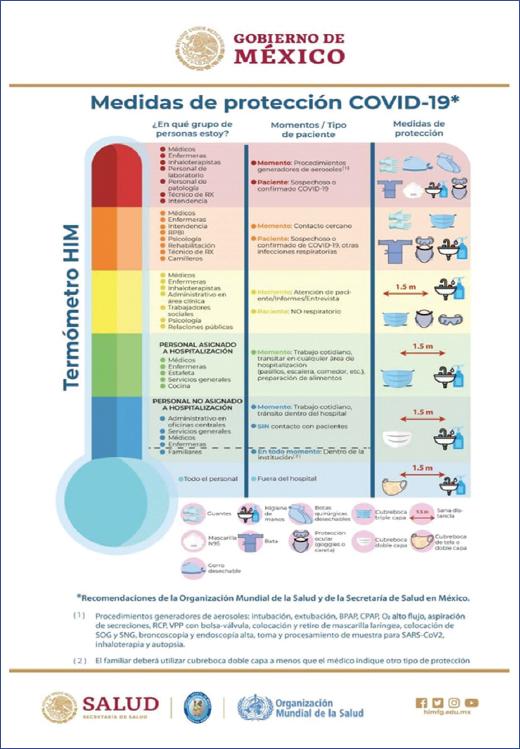
Figure 4 The thermometer of the Hospital Infantil de México Federico Gómez indicates the personal protection equipment required according to the type of personnel and their activity.

Figure 6 Weekly trend of results in COVID-19 suspected cases. Suspected COVID-19 cases per week (N = 1161). Positive SARS-CoV-2 cases = 190 (16.3%).
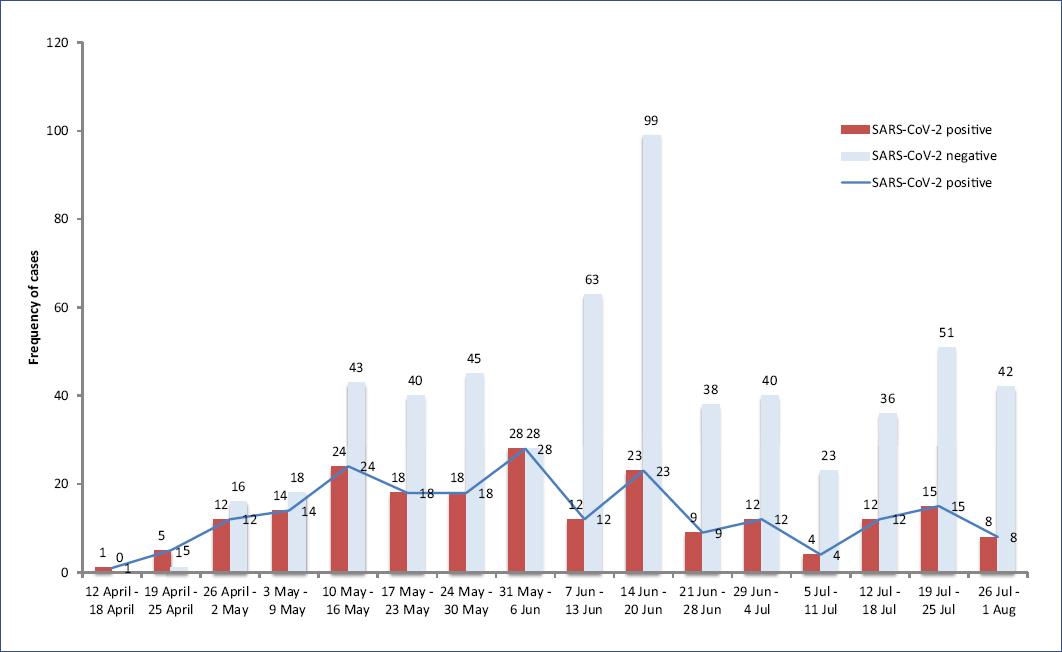
Figure 7 Weekly outcome of COVID-19 cases in healthcare personnel. Healthcare personnel with suspected COVID-19 per week (N = 792). Positive SARS-CoV-2 cases = 215 (27.1%).











 nueva página del texto (beta)
nueva página del texto (beta)




